The first thing readers should know is that there's an entire “industry” devoted to trying to second-guess Apple. The late Steve Jobs turned secrecy into an enviable marketing strategy, even in the company’s early days, and the constant speculation about what Apple might or might not be developing has reached fever pitch in recent years.
There is a host of industry forums and even websites, such macrumours.com, all devoted to trying to break news about Apple’s unconfirmed plans and product announcements, and the rumour mill surrounding an iWatch continues to grind away.
Early murmurings about an iWatch began around the time of the iPod Nano launch. Quickly, third party manufacturers designed plastic watchbands to hold the Nano because, when resting, its screen displays time as a watch face.
Naturally, some people believed the Nano was made to be strapped to a wristband, especially when Jobs is said to have alluded to the ‘watchband Nano’ at the launch.
Speculation about an iWatch has continued since Jeweller first reported on rumours in December 2011. And still ‘outsiders’ try to second-guess Apple. Even the reputable mainstream media such as Time has asked, “Would Apple create a smartwatch and, if so, when?”
Though some media outlets have been bolder – last year iwatchrumours.com actually provided a launch date, albeit the website announced it as May this year (2012) – it just shows how futile it is to try to predict Apple’s plans.
Interestingly, it wouldn't be the first time a major computer company entered the watch market. In October 2004, Microsoft joined with the Swiss watch behemoth Swatch, its equivalent in the watch and jewellery industry market, to announce the launch of the Swatch Paparazzi.
The Paparazzi was a smartwatch, based on Microsoft’s SPOT (Smart Personal Objects Technology) and could be connected to MSN Direct. The wearer would then choose only the information they wished to receive on their watch (news, sport, stockmarket quotes, etc) by visiting the MSN Direct website.
However, the Paparazzi was killed-off in April 2008 when Microsoft announced that it did “not have immediate plans to create a new version of the Smart Watch, as we are focused on other areas of our business.”
Secret projects
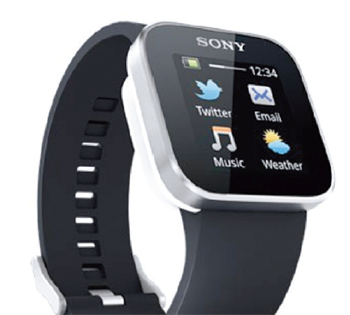
Sony Smartwatch |
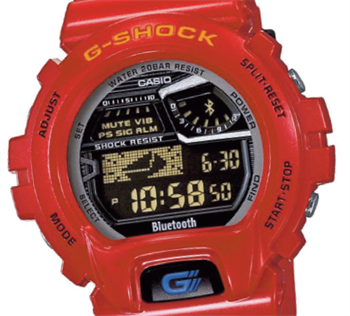
Casio Smartwatch |
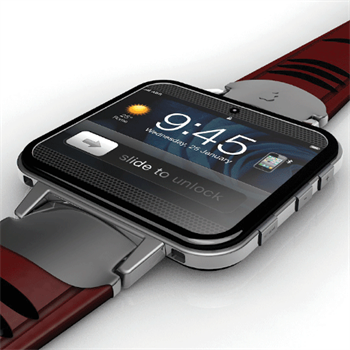
Artist's impression: ADR Studio |
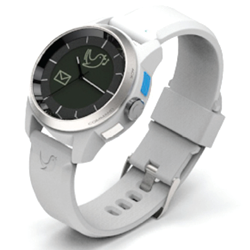
Cookoo Smartwatch |
More recently there have been rumours that Apple and Google are secretly working on “wearable computers”.
In December 2011, the New York Times (NYT) reported, “The ultimate version of this technology [wearable computers] is a screen that would somehow augment our vision with information and media. Over the last year, Apple and Google have secretly begun working on projects that will become wearable computers. Their main goal: to sell more smartphones. (In Google's case, more smartphones sold means more advertising viewed.)”
The report, written by Nick Bilton, claimed that Google researchers were working on peripherals that — when attached to one’s clothing or body — would communicate information back to an Android smartphone.
It’s arguable that wearable computers have been a reality for a long time given the array of high-tech digital watches already on the market. Think of top-end diving and mountaineering watches, heart rate monitors and Tissot’s T Touch – wearable computers are nothing new.
In May, Sony joined the party when it launched a smartwatch while, at around the same time, the Pebble was announced. The Pebble connects to iPhone and Android smartphones via Bluetooth and alerts the wearer to incoming calls, emails, and messages.
It also has a slew of apps designed specifically for the watch, allowing it to operate as a running or bike computer, displaying speed, distance and cadence data.
Then there was the launch of I’m Watch, another smartwatch that began shipping mid-year. Other’s companies to join the party or announce their intentions include the Cookoo, inPulse Blackberry, MetaWatch and Martian Watches, which all offer added features via connectivity to either a smartphone or cloud technology.
The speed with which not only this technology is being advanced but also that manufacturers are looking to capitalise on it by being early to market indicates this is likely not a fad but a trend towards what could be a substantial market.
While these offer similar capabilities they are all products from outside the traditional watch industry. However, recently the Japanese watchmaking giant Casio announced that it had entered the smartwatch market with its GB 6900, G-Shock.
There’s no doubt that the smartwatch market is hotting up, but now some people believe the game is about to change … in a big way!
Industry shake-up
Regardless of all the guesswork about Apple, one thing is sure; if an iWatch is coming it will be the greatest shake-up of the international watch scene since Seiko and Citizen ‘stole’ the market in the 1970s with their quartz watches only to see the Swiss taking back the high ground in 1983 with the launch of the Swatch watch.
The fact remains, apart from a few trends and fads, the watch industry has been relatively staid for more than 20 years.
Former managing director of Citizen Watches Australia, Graham Henrickson, believes that a paradigm shift is on the way, saying, “It’s an inevitable certainty and it’s just a matter of when.”
Henrickson says that there are three “opposing forces” that come together in a watch – form (aesthetics or design), function (technology and performance) and cost. “Until today, the watch industry has been driven by the ‘design’ of timepieces and it’s the key driver for consumer purchasing.
“But behind the scenes many watch companies are developing communication devices, security devices and personal computers that will be small and stable enough to take the form of a watch,” Henrickson says.
He adds, “If the iPhone phenomenon was to become the iWatch juggernaut, and there is every chance it may not be that far off, the world as we know it would change. However, all would not be not lost, we may all be wearing two things on our wrists, a mini computer/communication/entertainment device and something we consider a piece of art – a traditional timepiece because we are nostalgic creatures. After all, if the iWatch is anything like an iPhone in power usage, best you carry a back-up!”
Calling Dick Tracy
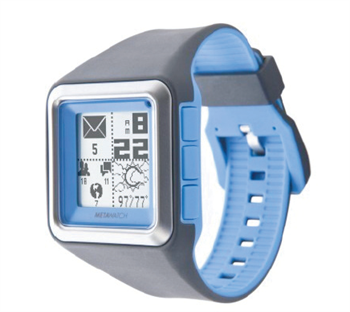
Pebble Smartwatch |
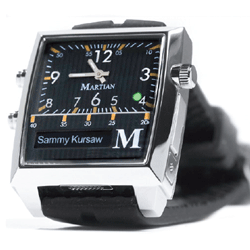
Martian Smartwatch |
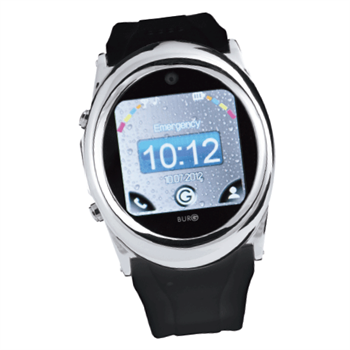
Burg Smartwatch |
When Apple launched its artificial intelligence software Siri in October 2011 as part of its iPhone 4s, it only added to the speculation that its iWatch could soon become a reality.
NYT’s Bilton speculated that, “Apple has also experimented with prototype products that could relay information back to the iPhone. These conceptual products could also display information on other Apple devices, like an iPod, which Apple is already encouraging us to wear on our wrists by selling Nanos with watch faces.
“A person with knowledge of the company's plans told me that a 'very small group of Apple employees' had been conceptualising and even prototyping some wearable devices. One proposal is a curved-glass iPod that would wrap around the wrist and wearers could communicate with the device using Siri,” Bilton wrote.
Other technology writers have added to the debate, saying that an iWatch is a possibility because of Apple’s iCloud technology.
Martin Foster points out that watch phones are already a reality. Foster, a retired watchmaker who now attends the international watch fairs reviewing new products, covered the 'It's a phone' smartwatch, launched by Dutch company Burg at the Hong Kong Clock and Watch Fair in September.
“If the rumours about an Apple iWatch are true then they have been a bit slow off the mark as a Dutchman has beaten them to it with the ‘It’s a phone’. And, indeed, it is everything that we might expect from an iWatch with advanced functions including a graphics screen and tracking to keep tabs on the children,” Foster explained.
He said production and sales of the Burg ‘It’s a phone’ are in full swing with a range of models from the serious full-functioned models to a colourful range for the kids. “If Apple want to compete with an iWatch they will be up against a very big and robust Dutchman with facilities in place and price points already much lower than we have come to expect from Apple products,” Foster said.
I was wrong, iWatch is coming
But back to whether an iWatch will become a reality - technology writer Mike Elgan, who had previously gone on record in September 2010 saying that Apple would not develop a wristwatch, has since done a back flip.
On cultofmac.com, a daily news website that follows everything Apple, Elgan declared that he was wrong about an Apple watch; “I now believe the current rumors that Apple is getting into the wristwatch business.”
Elgan listed Apple’s three criteria for entering an entirely new market and then explained why an Apple watch did not fit with the company’s future.
“The iWatch idea fails all three criteria: 1) existing watches can be awesome and elegant; 2) wristwatch-specific apps would be too small a market for Apple to bother with; and 3) an iWatch could never find the massive penetration of the iPhone, or even the iPad, given that most people consider wristwatches a fashion accessory, which they tend not to buy from computer companies,” Elgin wrote.
However, with the advent of Siri and iCloud, Elgin now believes the game has changed. “All this makes sense — if you think of an iWatch as a wristwatch and a stand-alone device.
But that’s not what the iWatch will be.
He explained why he believed an iWatch would be a remote control device. “A stand-alone Apple wristwatch makes no sense. But an elegant remote control, lashed to the wrist that enables Siri commands to bring things down from the Cloud makes all the sense in the world. Apple is already aggressively moving toward an iCloud-centric Appleverse where whatever iDevices you have connect and share with each other via iCloud.”
Not Apple's style
Writing for Time, Tim Bajarin says, “With all of this interest in the Nano as a pseudo-smartwatch and these new entries from Sony and Pebble, not to mention earlier models from Motorola and others, is it time for Apple to create its own iWatch, tied directly to the iPhone? Given this competitive pressure, you would think the answer should be, ‘Yes’. But if history is our guide, doing something just to counter the competition at this early stage is not Apple's style.”
Bajarin is an industry consultant, analyst and futurist covering the field of personal computers and consumer technology. He points out that Apple did not invent the MP3 player, but once the market for digital music players had been established, Apple created the iPod, which now dominates the music player industry with around 75 percent market share.
He believes that the development of smartwatches being tied to smartphones is in its infancy so, “Don't expect Apple to respond in kind just because the competition in this space is heating up, though. Instead, look for Apple to glean from these early smartwatch trailblazers. I think that once Apple believes it can create something that is very sleek, elegant, and innovative, then and only then will it consider bringing out an iWatch.”
Apple’s current marketing promotes the future of personal computing as being in the ‘clouds’, where you can take a photograph on your iPhone and it will automatically appear on your iPad. Add new music to your desktop iTunes and it will also appear on your iPhone and iPad!
If an iWatch is in Apple’s arsenal of future products, regardless of the launch date, and with wearers being able to communicate with their watch via Siri and manage their life no matter their location courtesy of iCloud, could it mean that the famous comic strip character Dick Tracy was 80 years ahead of his time?
And, just as the Japanese watchmakers changed the staid old Swiss watch industry when they launched quartz (battery) watches thereby forcing the Swiss to reinvent their industry, the time could be right for another major disruption to the traditional watch business.
Given that generations Y and Z have probably never worn a watch, who knows, the shake-up could broaden the market immensely. The only problem would be how the traditional watchmakers respond to the Apple powerhouse.